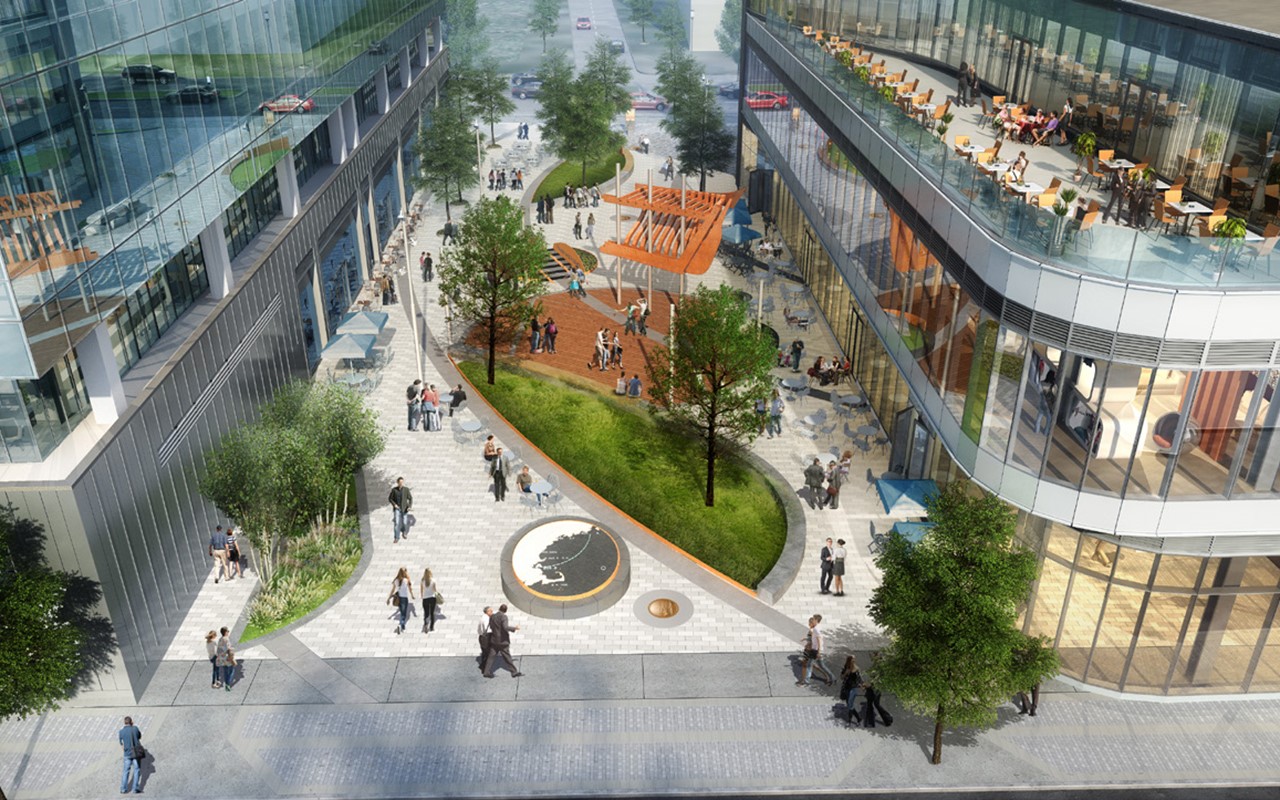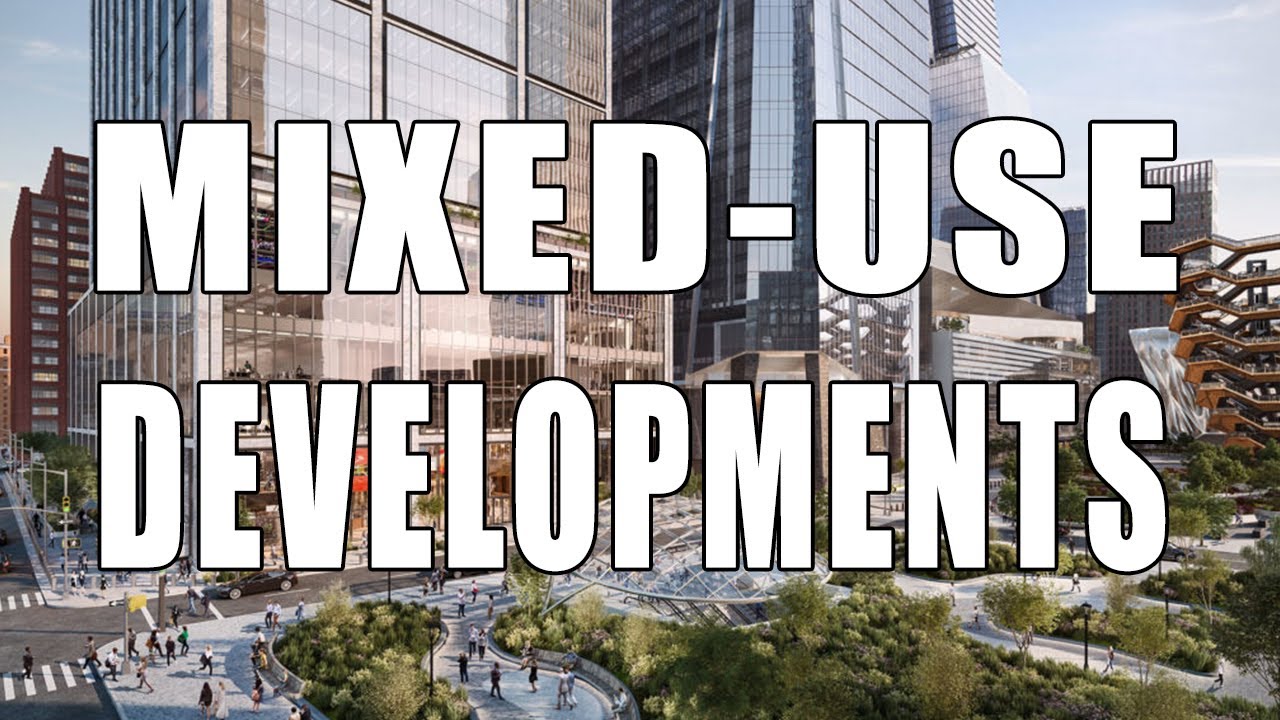Mixed-Use Development - Creating Vibrant And Sustainable Communities
Mixed-use development is a way to plan cities that includes residential, commercial, and industrial uses of land in the same development. The idea behind mixed-use development is to create more livable and sustainable communities where people can live, work, and play in the same area.
Author:George EvansApr 09, 202372.6K Shares1.6M Views

Mixed-use developmentis an approach to urban planningthat combines various land uses, such as residential, commercial, and industrial, within the same development.
The idea behind mixed-use development is to create more livable and sustainable communities where people can live, work, and play in the same area.
In this article, we will explore the concept of mixed-use development, its benefits, and how it is transforming the urban landscape.
What Is Mixed-Use Development?
Mixed-use development is a type of urban planning that combines different land uses, such as residential, commercial, and industrial, within the same development.
This approach to development seeks to create more vibrant and sustainable communities by promoting walkability, reducing commuting times, and fostering social interaction.
Mixed-use development can take many forms, from a single building that combines residential and commercial uses to a whole neighborhood that integrates various land uses.
The key is to create a blend of activities that encourages people to spend more time in the community, support local businesses, and reduce their environmental impact.
Benefits Of Mixed-Use Development
Mixed-use development offers several benefits that make it an attractive alternative to traditional single-use developments. Here are some of the main benefits of mixed-use development:
1. Increased Walkability
One of the primary benefits of mixed-use development is increased walkability. By combining various land uses within the same development, residents have easy access to the services and amenities they need, such as grocery stores, restaurants, and shops. This, in turn, reduces the need for driving and encourages walking and cycling.
2. Reduced Commuting Times
Mixed-use development can also reduce commuting times by providing opportunities for people to live and work in the same area. This is particularly important in urban areas, where traffic congestion is a major problem.
By reducing commuting times, mixed-use development can improve the quality of life for residents and reduce their carbon footprint.
3. Fosters Social Interaction
Mixed-use development also fosters social interaction by creating vibrant and diverse communities.
By promoting the use of public spaces and creating opportunities for people to interact with each other, mixed-use development can help build a sense of community and reduce social isolation.
4. Supports Local Businesses
Mixed-use development can also support local businesses by providing a ready-made customer base.
By creating a diverse mix of commercial and residential uses, mixed-use development can help create a vibrant local economy and support small businesses.
5. Reduces Environmental Impact
Finally, mixed-use development can help reduce the environmental impact of urban development by promoting sustainable transportation, reducing the need for driving, and encouraging the use of public transit.

The Power of Mixed-Use Developments
Examples Of Mixed-Use Development
Mixed-use development has become increasingly popular in recent years, and there are many examples of successful mixed-use developments around the world. Some notable examples include:
- The Pearl District in Portland, Oregon:This former industrial area has been transformed into a vibrant mixed-use neighborhood with a diverse mix of residential, commercial, and retail uses.
- Battery Park City in New York City:This 92-acre development on the Hudson River combines residential, commercial, and retail uses with ample green space and a waterfront esplanade.
- The Gaslamp Quarter in San Diego, California:This historic neighborhood has been revitalized with a mix of residential, commercial, and retail uses that have helped to create a vibrant local economy.
How To Finance A Mixed-use Development
Financing a mixed-use development can be complex and requires careful planning. The financing options available will depend on various factors such as the size and scope of the project, location, market demand, and the developer's financial situation.
Here are some common ways to finance a mixed-use development:
- Equity Financing:This involves selling shares in the development to investors who will become partial owners of the project.
- Debt Financing: This involves taking out loans from banks, financial institutions, or private lenders to finance the development.
- Public-Private Partnerships:This involves partnering with government agencies to finance the development. The government may provide funding or tax incentives for the project.
- Crowdfunding: This involves raising funds from a large number of people through online platforms.
- Joint Ventures:This involves partnering with other developers or investors to finance the project.
It's important to note that each financing option has its own advantages and disadvantages, and the developer should carefully consider all available options before making a decision.
Additionally, the developer should have a solid business plan in place and a clear understanding of the potential risks and rewards associated with the project.
People Also Ask
What Is Mixed-Use Development?
Mixed-use development is a term used to describe a real estate development that includes a combination of residential, commercial, cultural, institutional, or industrial uses, where those functions are physically and functionally integrated, and that provides pedestrian connections.
How Does Mixed-Use Development Benefit Communities?
Mixed-use development offers a range of benefits for communities, including increased walkability, reduced traffic congestion, improved economic viability, and enhanced social interaction.
What Are The Key Elements Of Successful Mixed-Use Developments?
The key elements of successful mixed-use developments include the right location, appropriate scale, a mix of uses that complement one another, well-designed public spaces, and high-quality architecture.
What Are The Challenges Of Mixed-Use Development?
The challenges of mixed-use development include the need for careful planning and design to ensure that the different uses work together seamlessly, as well as issues related to parking, traffic flow, and building codes.
How Do You Finance Mixed-Use Development Projects?
Mixed-use development projects can be financed in a variety of ways, including through public-private partnerships, tax-increment financing, and various forms of debt and equity financing.
The specific financing approach will depend on the size and scope of the project, as well as local regulations and market conditions.
Final Words
Mixed-use development is an innovative and effective way of designing urban spaces that are versatile and adaptable to the changing needs of a community.
It offers a range of benefits, including reduced traffic congestion, increased foot traffic, improved walkability, and enhanced community interaction.
As urban populations continue to grow, mixed-use development is becoming an increasingly popular option for creating sustainable and livable communities.
By incorporating residential, commercial, and community spaces into a single development, mixed-use projects can promote a sense of place and foster a greater sense of community among residents.
Overall, mixed-use development represents an exciting and promising direction for urban design in the 21st century.

George Evans
Author
George Anderson, an exceptional architectural designer, envisions and brings to life structures that transcend the realm of imagination. With an unwavering passion for design and an innate eye for detail, George seamlessly blends form and function, creating immersive spaces that inspire awe.
Driven by a deep appreciation for the interplay of space, light, and materials, George's innovative approach redefines the possibilities of architectural design. His visionary compositions leave an indelible mark, evoking a sense of wonder and transforming the built environment.
George Anderson's transformative designs and unwavering dedication continue to shape the architectural landscape, pushing the boundaries of what is possible and inspiring generations to come.
Latest Articles
Popular Articles